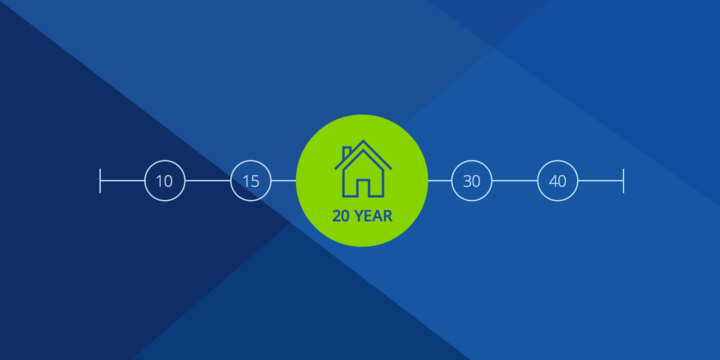What Is a Co-Borrower on a Mortgage?


Written by Alycia Lucio on August 11, 2023
A mortgage co-borrower is someone who applies for a home loan with another person to help them qualify for the loan or better loan terms, like a larger loan amount or lower interest rate.
Co-borrowers must be included on the mortgage, and anyone included on the mortgage is automatically listed on the property’s title. Because of this, a co-borrower is considered a co-owner of the property and is equally responsible for repaying the loan. Depending on the loan program, a co-borrower can be a spouse, partner, family member or friend. Some loans may even require the co-borrower to live in the home with you and meet additional qualifications.
Co-borrower vs co-signer
Co-borrower and co-signer are different terms used to describe one or more people who are financially responsible for repaying the loan. You may even hear a co-borrower or co-signer be referred to as a joint applicant, since both are applying for a loan with another person. The main difference is that a co-signer does not have any ownership rights to the property, since they are not listed on the title.
A co-borrower is listed on the mortgage and the title, making them a co-owner of the property. There are two ways co-borrowers can be included on the title: as joint tenants, who have equal ownership shares of the property, or as tenants in common, who can define their individual ownership shares via a legal document.
Types of co-borrowers
There are two types of co-borrowers: occupant co-borrowers and non-occupant co-borrowers.
Occupant co-borrower: Lives in the home with the primary borrower.
Non-occupant co-borrower: Does not live in the home with the primary borrower, but they still have an ownership stake in the property.
A person who lives in the home is not automatically considered a co-borrower but can be included on the title of the home as a co-owner without needing to become a co-borrower. However, any co-borrower must be included on the mortgage and the title. Being included on the title makes a co-borrower also a co-owner of the property. Being included on the mortgage makes the co-borrower equally responsible for the loan.
Who can be a co-borrower on a mortgage?
Generally speaking, anyone who meets the co-borrower requirements can be a mortgage co-borrower. Requirements can vary by lender and loan type. All loans specify that the co-borrower can’t have a financial interest in the sale of the property. For example, you can’t co-borrow with the seller, builder, real estate agent, appraiser or attorney selling the home. Government-backed loans typically set additional co-borrower restrictions, making conventional loans the most lenient when it comes to including a mortgage co-borrower.
Conventional loans
Your co-borrower may be a parent, sibling, significant other, ex-spouse or friend who either does or does not live in the home with you.
FHA loans
With an FHA loan, your co-borrower must be a relative. A spouse or significant other must provide proof of relationship. Close friends may be considered if a long history of friendship can be proven.
VA loans
Because VA loans are only available to qualifying active duty military members and veterans, co-borrowers must be the legally married spouse of an eligible borrower or another VA-qualified individual. The co-borrower must also occupy the home.
USDA loans
USDA loans, which are available to borrowers in rural areas, require co-borrowers to occupy the property.
Co-borrower requirements
A co-borrower must be willing to be included on the mortgage and title with the primary borrower. In addition, they’ll also have to meet the same loan qualification criteria as the primary borrower. This typically requires lenders to verify each borrower has the following:
Decent credit: The lender will check each applicant’s credit profile, looking for any late payments, bankruptcies or other red flags. Additionally, they’ll run a hard credit check to verify credit scores are within the recommended range.
Proof of residency: Borrowers and co-borrowers must be a US citizen, lawful permanent resident or legal non-permanent resident. This can be proven by providing a social security or ITIN number and picture ID.
Two years of work history: Lenders want to make sure all borrowers have a steady source of income. This can be proven by reviewing W2s and tax returns. They may also contact each applicant’s employer to verify employment.
A well-balanced debt-to-income: All applicants will be required to submit proof of income and assets, by sharing pay stubs, bank statements and statements from any investment accounts. The lender will then calculate each borrower’s debt-to-income (DTI) ratio to ensure that there’s room in their monthly budget for the mortgage payment.
How to choose a mortgage co-borrower
Having a co-borrower can help boost your chances of getting approved for a mortgage loan and may help you qualify for better rates or a higher loan amount. When choosing a mortgage co-borrower, carefully consider the benefits and drawbacks. Don’t take someone up on the offer just because they’re willing.
First, consider your relationship with the co-borrower. Entering into financial agreements with friends and family members can cause emotional strain. Beyond the relationship considerations, you’ll also want to be sure your co-borrower has good credit and can afford the monthly payments if you ever fall short.
Benefits of having a mortgage co-borrower
- Potentially a lower interest rate
- More qualifying loan options
- Support on mortgage payments
Drawbacks of being a mortgage co-borrower
- Legal responsibility to repay the loan, even if the primary borrower stops payment
- Negative impact to your credit score if the primary borrower defaults
- A long-term commitment, as most loans last 15 or 30 years
What rights does a co-borrower have on a house?
A co-borrower has rights to the property according to how the title is held. As a joint tenant, the co-borrower has equal ownership rights to the property. As a tenant in common, the co-borrower has rights to the property but may not own as much of the home as the primary borrower. Here’s a deeper look at what these two options mean:
Joint tenancy
Co-borrowers with joint tenancy share equal ownership when buying a home. If one borrower dies, the surviving owner inherits the other person’s share. With joint tenancy, one person cannot sell their ownership stake in the home without approval from the other co-owner(s).
Tenancy in common
As a tenant in common, each person owns a percentage of the property based on how much money they invest. Each individual owner decides who will get their share of the property when they die — whether it’s the other co-owner or a different individual. With tenancy in common, each owner has the right to sell their share of property without the consent of the other owners.
Can a co-borrower be removed from a mortgage?
Once you buy a home with a co-borrower, it’s hard to remove them from your mortgage. You must refinance your loan or sell the home to remove the co-borrower.
Should you add a co-borrower to your mortgage?
Every mortgage borrower’s situation is different. If you’re unsure whether or not to have a co-borrower, you may want to first find out if you can qualify for a mortgage on your own. You can easily start the pre-qualification process with us at Zillow Home Loans.
If you do decide to buy a house with a co-borrower, it’s important to remember that they’ll be equally responsible for the mortgage for the full duration of the loan. A co-borrower cannot be removed unless you sell the home or refinance to a new mortgage by proving that you can qualify for the loan on your own.
If you’re undecided, consider exploring alternative loan options that may give you a better chance of being approved on your own. VA, USDA and FHA loans all have more lenient credit requirements than conventional home loans, and they are available with lower down payment options.
How to apply for a mortgage with a co-borrower
To add a co-borrower to your mortgage, you’ll need to first contact your lender to see if you and your co-borrower pre-qualify for the mortgage. You and your co-borrower will then need to complete a loan application and begin the mortgage underwriting process. The process typically involves running a hard credit check on both applicants and gathering information about both parties’ income, assets and debts.
How much home can you afford?
At Zillow Home Loans, we can pre-qualify you in as little as 5 minutes, with no impact to your credit score.
Zillow Home Loans, NMLS # 10287. Equal Housing Lender
Get pre-qualifiedHow much home can you afford?
See what's in reach with low down payment options, no hidden fees and step-by-step guidance from us at
Zillow Home Loans.
Zillow Home Loans, NMLS # 10287. Equal Housing Lender
Calculate your BuyAbility℠
Related Articles
Get a mortgage with Zillow Home Loans
Go from dreaming to owning with low down payment options, competitive rates and no hidden fees. A dedicated loan officer will guide you until you have your keys in hand.

Zillow Home Loans, NMLS #10287. Equal Housing Lender.



